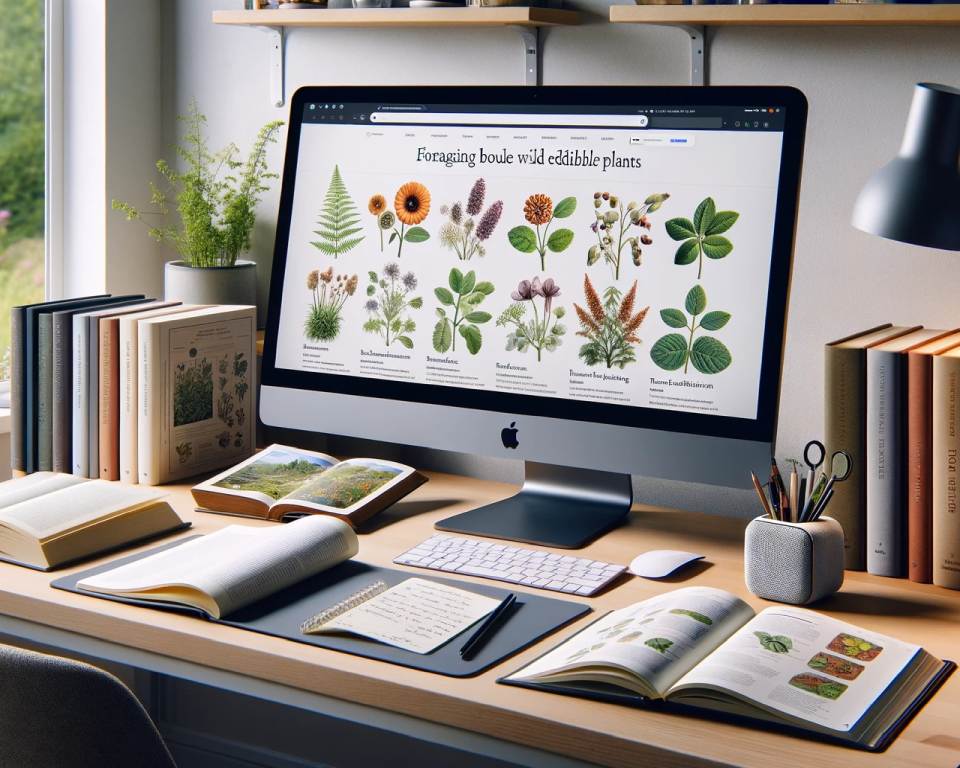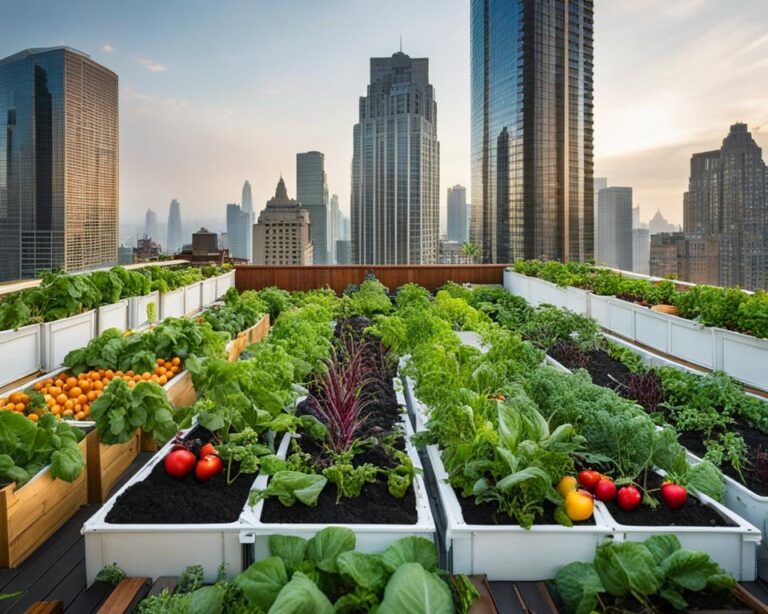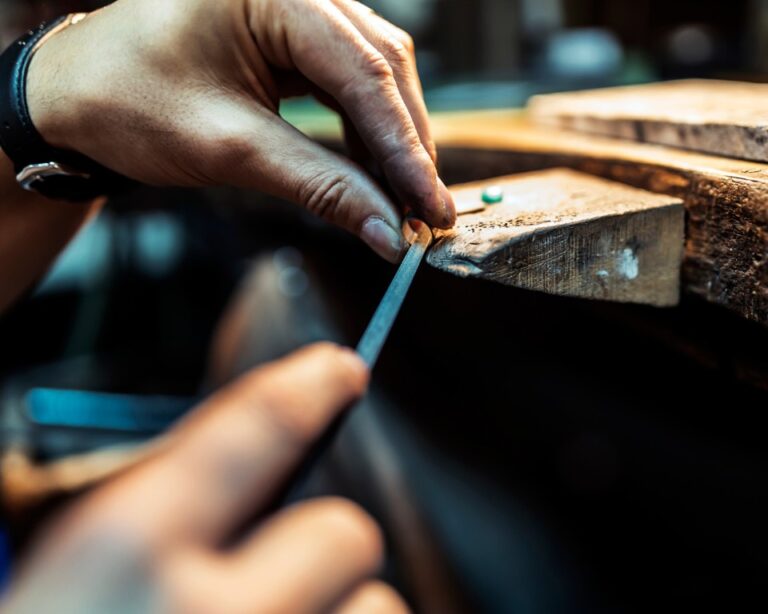The Ultimate Prepper’s Guide to Foraging Wild Edibles and Medicinals
Welcome to our comprehensive resource, The Ultimate Prepper’s Guide to Foraging Wild Edibles and Medicinals. In this guide, we will provide you with essential knowledge and techniques for using wild plants to supplement food production and ensure survival. Whether you’re a seasoned forager or a beginner, this guide is designed to give you the tools and information you need to safely identify, harvest, and utilize common North American wild edible plants.
Written by David Nash, an esteemed expert in the field of foraging and self-sufficiency, this guide emphasizes the importance of botanical knowledge in preparedness. It covers a wide range of topics, including the safe identification of edible plants, the proper techniques for harvesting, and the various uses of these plants – from providing shelter and materials to offering medicine and nourishment. With a special focus on North American trees, this guide will help you become proficient in identifying and utilizing their unique properties.
Whether you’re interested in foraging for added self-reliance or preparing for potential emergencies, this guide is a vital resource. We believe that understanding the natural world and its offerings is essential for our survival and well-being. By learning to forage wild edibles, we can unlock a wealth of resources that can sustain us during challenging times.
In the sections to follow, we will explore various aspects of foraging, including how to learn about wild edible plants, safety precautions such as the universal edibility test, the suitability of foraging as a meal plan for outdoor adventures, and guidelines for responsible harvesting. We will also delve into the identification of different plant parts and provide in-depth knowledge on specific plant species, from trees to shrubs.
Additionally, we will share instructions for preparing medicinal items using wild plants, as well as recommend botanical guides for accurate plant identification. We understand that continuous learning is key to becoming a proficient forager, and we’ll provide you with suggested reading materials to further your expertise.
We hope you find this guide informative and empowering. Let’s embark on this journey together as we harness the power of nature’s bounties and develop the skills necessary for self-sustainability and resilience.
How to Learn About Wild Edible Plants
One of the key aspects of foraging wild edibles is acquiring knowledge about the plants. Understanding which plants are safe to eat and how to properly identify them is crucial for a successful foraging experience. In this section, we will explore different ways to learn about wild edible plants and equip you with the necessary foraging techniques.
1. Books
Books are an excellent resource for learning about wild edible plants. Look for reputable field guides and foraging books that provide detailed descriptions and vivid images of the plants you might encounter. Some popular titles include “The Forager’s Harvest” by Samuel Thayer and “Nature’s Garden” by Samuel Thayer. These guides can serve as your go-to foraging companions, aiding in plant identification and offering valuable insights into the uses and preparations of wild edibles.
2. Online Resources
The internet offers a wealth of information on wild edible plants. Numerous websites and blogs dedicated to foraging provide helpful guides, plant profiles, and even interactive forums where you can connect with experienced foragers. Visit reputable websites like Wild Edible or Eat the Weeds, which offer comprehensive databases of wild edibles along with detailed articles and videos for further learning.
3. Join Foraging Groups
Connecting with local foraging groups or clubs can be an invaluable way to learn about wild edible plants. These groups often organize guided foraging hikes, workshops, and hands-on experiences, allowing you to learn from experienced foragers in your area. By joining these groups, you gain access to a wealth of knowledge and build a supportive network of fellow enthusiasts who share your passion for foraging.
4. Online Courses and Workshops
If you prefer a more structured approach to learning about wild edible plants, consider enrolling in online courses or attending workshops. Many reputable organizations and experienced foragers offer virtual classes that cover plant identification, foraging techniques, and the safe and sustainable harvesting of wild edibles. Participating in these courses provides a comprehensive educational experience and the opportunity to interact with knowledgeable instructors.
“Learning about wild edible plants is an ongoing journey of exploration and discovery. Each new plant you encounter adds to your foraging repertoire and enhances your connection with nature’s bountiful offerings.”
Whatever method you choose, it’s essential to prioritize proper plant identification and gather information from reliable sources. Remember to cross-reference information when possible and consult multiple resources to ensure accuracy. Learning about wild edible plants through books, online resources, joining foraging groups, or participating in courses is an investment in self-sufficiency and opens up a world of culinary and medicinal possibilities.
- Books: “The Forager’s Harvest” by Samuel Thayer, “Nature’s Garden” by Samuel Thayer
- Websites: Wild Edible, Eat the Weeds
Universal Edibility Test
The universal edibility test is an essential safety precaution for foragers when it comes to consuming unknown plants in the wild. It provides a step-by-step process to assess the potential toxicity of unfamiliar plant species. By observing and testing small amounts of each part of the plant, foragers can ensure their safety before incorporating wild food into their diets.
Conducting the universal edibility test involves the following steps:
- Gather the plant: Select a small portion of the plant you wish to test, ensuring you have various parts such as leaves, stems, flowers, and roots.
- Smell the plant: Take a moment to carefully smell the plant. Some toxic plants have distinct, unpleasant odors that can serve as an indication of potential danger.
- Taste the plant: Test the plant by placing a small piece on your tongue, allowing it to rest there for a few minutes. Pay attention to any immediate bitter or acidic flavors.
- Hold the plant against your lips: Place the plant against your lips—without ingesting it—and wait for any irritation or burning sensation. If you experience discomfort, remove the plant from your lips immediately.
- Chew and hold in your mouth: Chew a small portion of the plant, but do not swallow. Hold it in your mouth for at least 15 minutes, paying attention to any taste changes, burning sensations, or signs of irritation. Spit out the plant afterward.
- Swallow and wait: Finally, swallow a small portion of the plant. Monitor your body’s reaction for the next several hours—specifically for nausea, stomach cramps, or any other adverse symptoms. If you experience any negative effects, seek medical attention.
Remember, the universal edibility test is not foolproof, and it may be challenging for individuals with certain health conditions or sensitivities. It is always recommended to consult with a knowledgeable expert or reference reputable foraging guides before attempting to consume wild plants.
By exercising caution and conducting the universal edibility test, foragers can make informed decisions about consuming unfamiliar plants in the wild, ensuring their safety and well-being.
Is Foraging an Appropriate Meal Plan for Outdoor Adventure?
When venturing into the great outdoors, finding food to sustain ourselves becomes a critical task. Foraging for wild edibles presents a unique opportunity to connect with nature and fulfill our nutritional needs. However, it is crucial to assess the suitability of foraging as a meal plan for outdoor activities. Let’s explore the factors that influence the appropriateness of foraging in the wild and discuss the necessary precautions to ensure our safety.
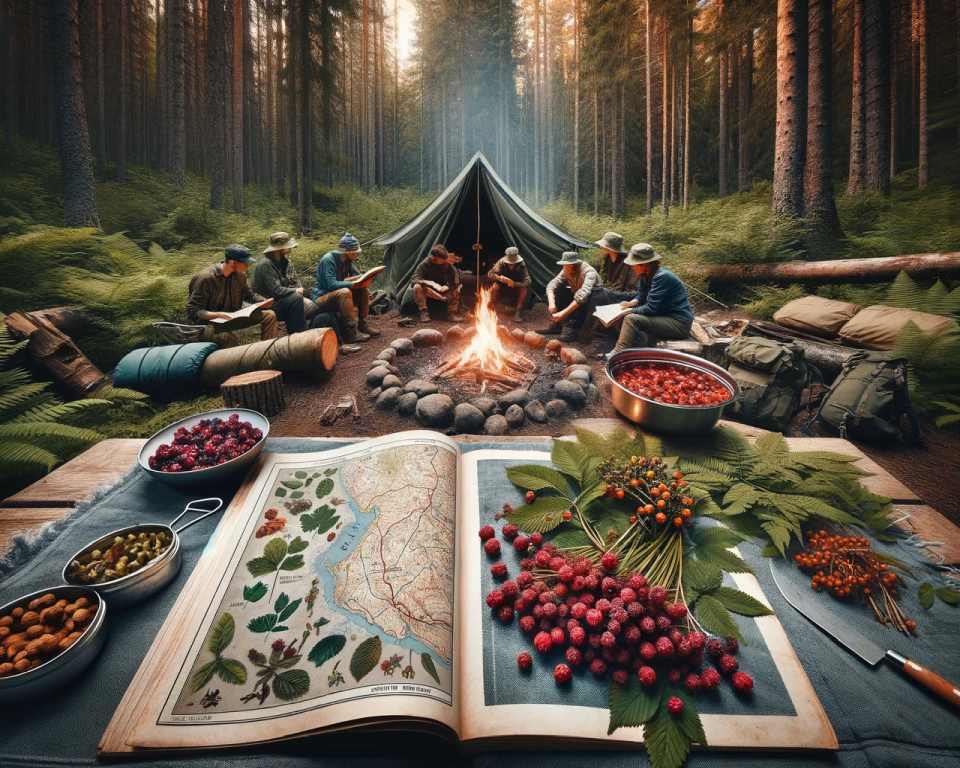
Foraging can be a viable option for obtaining sustenance during outdoor adventures, as it allows us to tap into the abundance of nature’s offerings. The satisfaction of gathering our own food and the variety of flavors provided by wild edibles enhance the overall experience. Furthermore, foraging can serve as a skill-building exercise, deepening our knowledge of local ecosystems and the plant kingdom.
However, embarking on a foraging expedition requires careful planning and a solid understanding of foraging techniques. It is essential to be well-versed in plant identification, distinguishing between edible species and potentially harmful ones. Proper knowledge ensures that we gather safe and nutritious wild edibles, minimizing the risks associated with misidentification.
We must also take into account the natural constraints of the environment we are exploring. Availability and seasonality of wild edibles vary from region to region and are influenced by factors such as climate, habitat, and human impact. Prior research and understanding of the local flora will guide our foraging efforts in a targeted and productive manner.
“Foraging for wild edibles is an opportunity to connect with nature and fulfill our nutritional needs.”
While foraging can be an exciting and fulfilling endeavor, it is crucial to exercise caution and adhere to safety guidelines. Our safety should always be the top priority when engaging in any outdoor activity, and foraging is no exception.
First and foremost, we need to be knowledgeable about potential hazards in the wild. Some wild edibles may have toxic look-alikes, while others may harbor parasites or pathogens. Therefore, we must be proficient in using foraging techniques, including the universal edibility test, to verify the safety of unknown plants before consumption.
Foraging Safety Precautions:
- Learn from experienced foragers or attend foraging workshops to acquire proper skills and knowledge.
- Carry a trustworthy field guide or foraging app to aid in plant identification.
- Start with easily identifiable and commonly foraged species to build confidence and familiarity.
- Ensure the sustainability of wild edible plants by harvesting responsibly and not depleting local populations.
- Respect laws and regulations regarding foraging in protected areas or private lands.
- Consider any allergies or medical conditions that may affect the consumption of certain wild edibles.
- Always wash and properly cook wild edibles to remove dirt, insects, and potential contaminants.
By following these safety precautions and continually expanding our knowledge of foraging techniques, we can confidently incorporate wild edibles into our outdoor meal plans. Foraging adds an exciting element of discovery and self-reliance, enabling us to forge a deeper connection with the natural world.
However, it is worth noting that foraging may not always be a practical or reliable sole source of sustenance during outdoor adventures. Factors such as terrain, time constraints, and energy expenditure must be considered. Therefore, it is wise to supplement foraged foods with other lightweight and nutrient-dense options, such as trail mix, energy bars, and dehydrated meals.
As outdoor enthusiasts, we must remember that foraging is a skill that develops over time. Practicing responsible foraging techniques and continuously expanding our knowledge base will ensure a safe and enriching experience in the wild.
Identifying Plant Parts
Accurate plant identification is essential for successful foraging. To effectively identify different wild edible plants, it is crucial to understand the various parts of the plant and their distinguishing features. This section will focus on the identification of leaves, stems, flowers, and roots, providing guidance on key characteristics to look out for during your foraging journey.
Leaves
- Leaf shape: Pay attention to the shape of the leaves, as it can vary significantly between different plant species. Leaves may be oval, lanceolate, heart-shaped, or lobed, among others.
- Leaf arrangement: Observe how the leaves are arranged on the stem. They can be alternate, opposite, or whorled, which can help narrow down your identification.
- Leaf margin: Look closely at the edges of the leaves. The margin can be smooth, serrated, toothed, or lobed, providing important clues for identification.
Stems
- Growth pattern: Examine the growth pattern of the stems. They can be erect, climbing, creeping, or procumbent, which can give you valuable information about the plant.
- Texture: Feel the stem’s texture to determine if it is smooth, hairy, prickly, or woody. Texture can be a useful identifying characteristic.
- Color: Take note of the stem’s color, as it can range from green to brown, and even have distinct patterns or markings.
Flowers
- Flower shape: Observe the shape of the flowers, as it can vary widely among different plant species. Flowers can be cup-shaped, bell-shaped, tubular, or disk-shaped.
- Color: Pay attention to the color of the flowers, as it can provide important clues for identification. Flowers come in a wide range of colors, including white, yellow, purple, pink, and red.
- Arrangement: Notice how the flowers are arranged on the plant. They can grow in clusters, spikes, umbels, racemes, or solitary.
Roots
- Size: Consider the size of the roots when identifying plants. They can be fibrous, taproots, rhizomes, or bulbs, each with distinct characteristics.
- Color: Look at the color of the roots, as it can vary from white to yellow, orange, brown, or even red, depending on the plant.
- Texture: Feel the texture of the roots. They can be smooth, hairy, fleshy, or woody, which can assist in identification.
Understanding the various plant parts will equip you with the necessary knowledge to identify wild edible plants safely. Remember to consult a reliable foraging guide or resource for more detailed information on specific plant characteristics and to cross-reference your findings for accuracy.
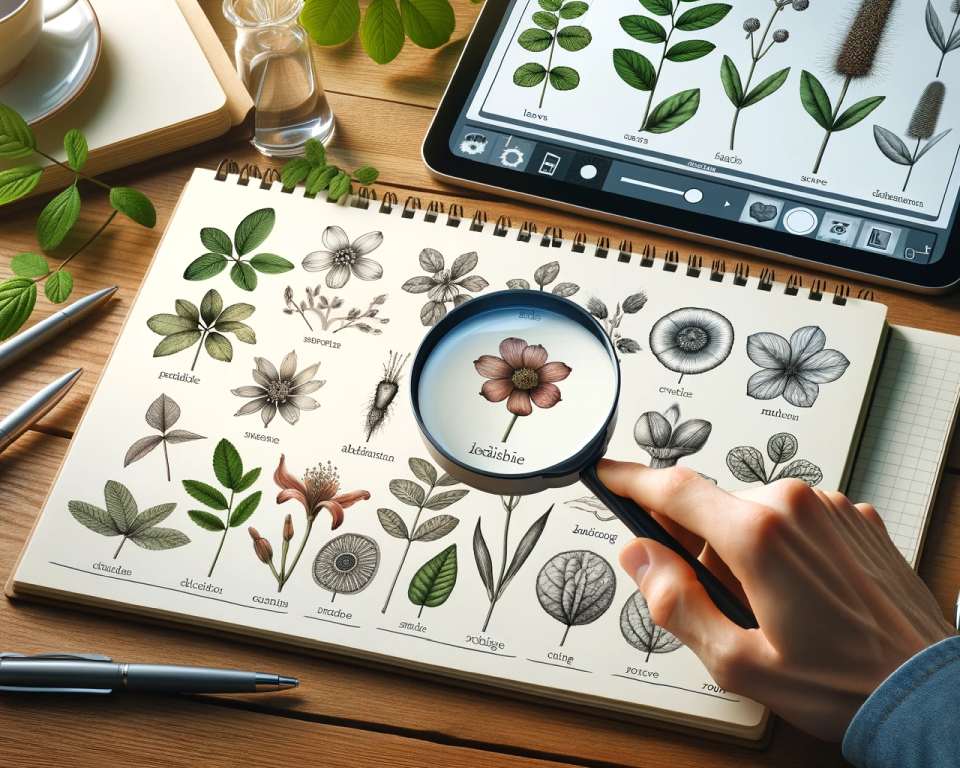
“Accurate plant identification is crucial for successful foraging. Understanding the different parts of the plant and their distinguishing features is key.”
Responsible Harvesting Guidelines
When foraging wild edible plants, it is essential to practice responsible harvesting to ensure the preservation of these valuable resources for future generations. Here, we discuss guidelines for ethical foraging and sustainable harvesting techniques.
Harvest Only What is Needed
When gathering wild edible plants, it is crucial to take only what is necessary for your immediate needs. Harvesting more than required can deplete local plant populations and disrupt the delicate ecosystem.
Avoid Rare or Endangered Species
Responsible foraging means avoiding the collection of rare or endangered plant species. Prioritize the well-being and conservation of these vulnerable plants by steering clear of their harvesting. Focus instead on abundant and readily available species.
Leave Enough Plants for Regrowth and Reproduction
Ensure the regrowth and reproduction of wild edible plants by leaving a sufficient number of plants behind after harvesting. By allowing them to produce seeds and propagate, you contribute to the sustainability of these plant communities.
Remember, a responsible forager considers the long-term impact of their actions on the natural environment. By following these guidelines, we can all play a part in preserving wild edible plants and the ecosystems they support.
“Responsible foraging means ensuring the sustainable use of wild plant resources by harvesting thoughtfully and considering the long-term impact on the environment.” – David Nash
Trees
Trees provide an abundance of wild edible plants that are essential for survival in the wilderness. Knowing how to identify and utilize these tree species is a crucial skill for foragers. In this section, we will highlight several easily recognized tree species common in North America.
“The clearest way into the Universe is through a forest wilderness.” – John Muir
American Basswood
American Basswood, also known as Tilia americana, is a deciduous tree found throughout North America. Its leaves and flowers are edible and can be used to make a variety of dishes and beverages. The sweet-scented flowers can be harvested in late spring and added to salads, teas, or used as a flavoring agent in culinary creations.
Birch
Birch trees, belonging to the Betula genus, are another valuable resource for foragers. The inner bark of the birch tree can be harvested and dried for later use as a flour substitute. The bark can also be boiled to make a nutritious tea that is rich in Vitamin C. Additionally, the sap of the birch tree can be tapped and collected to make a refreshing beverage.
Oak
Oak trees, a staple of many forests, offer various edible parts. Acorns, the nuts of oak trees, can be harvested and processed into a nutritious flour or roasted and used as a coffee substitute. The leaves of oak trees can also be used as a wrapping in cooking, imparting a subtle, smoky flavor to the food.
Walnut
Walnut trees, part of the Juglans genus, produce delicious edible nuts that are highly nutritious. The nuts can be cracked open and eaten as a snack or used in baking recipes. Walnut oil, extracted from the nuts, can also be used for cooking or as a flavorful addition to salads.
By familiarizing ourselves with the common usage of these tree species and their edible parts, we enhance our ability to forage for survival and increase our self-reliance in the wild.
Plants and Shrubs
Besides trees, numerous plants and shrubs provide edible options in the wild. Exploring the diverse range of wild edible plants can greatly enhance your survival skills. Here are 25 common plants found in the United States:
- Amaranth
- Blackberries
- Dandelion
- Wild Strawberry
- …
- …
- …
These plants offer abundant nutritional value and can be easily incorporated into various recipes. But their uses extend beyond food. For example, dandelions can also be used to make a soothing herbal tea, while amaranth leaves can be consumed both raw and cooked. This versatility allows you to adapt to different survival scenarios.
It is important to note that while these plants are generally safe for consumption, it is crucial to properly identify them to avoid any potential risks. Familiarity with these wild edibles broadens your options for sustenance and survival.
Recipe: Wild Strawberry Salad
One delicious way to enjoy wild strawberries is by preparing a refreshing salad. Here’s a simple recipe to try:
- Ingredients:
- Wild strawberries
- Leafy greens
- Chopped nuts (optional)
- Crumbled cheese (optional)
- Vinaigrette dressing
- Instructions:
- Wash and dry the wild strawberries and leafy greens.
- Toss the wild strawberries and leafy greens together in a salad bowl.
- Add in the chopped nuts and crumbled cheese, if desired.
- Drizzle vinaigrette dressing over the salad.
- Toss well to coat all the ingredients.
- Serve and enjoy!
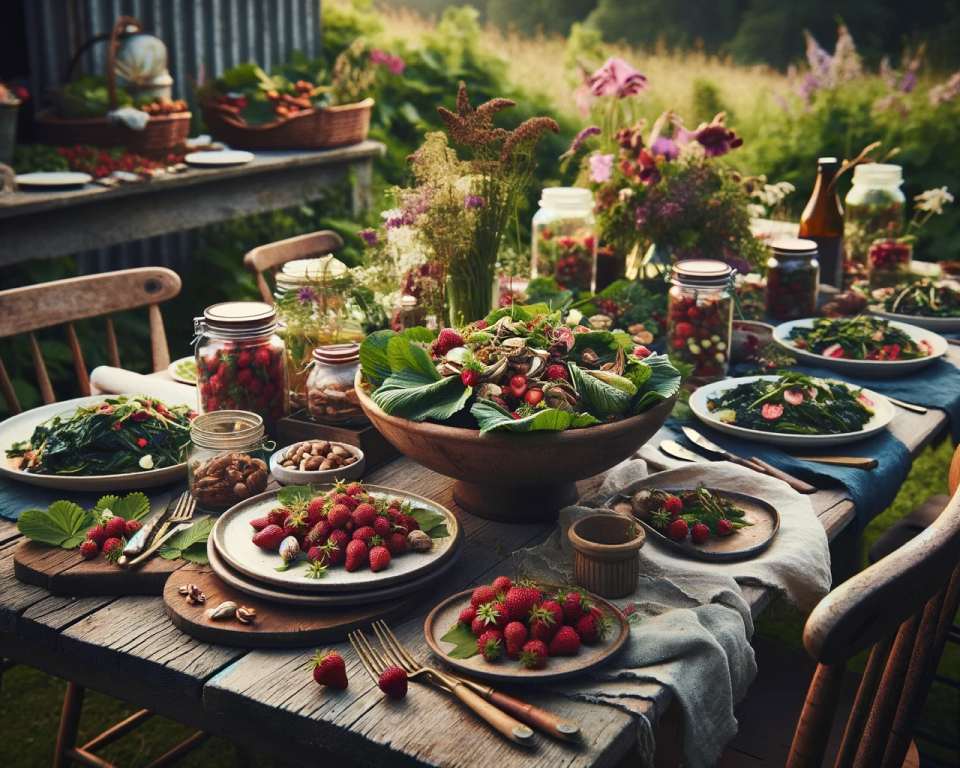
This simple salad showcases the vibrant flavors of wild strawberries while providing essential nutrients for your survival. Feel free to experiment with other edible plants and create your own wild foraged culinary creations.
Additional Instructions for Medicinal Items
In addition to food, wild plants have incredible healing properties that can be utilized to prepare medicinal items. Harnessing the power of nature’s pharmacy enhances our self-sufficiency and resilience. Here, we provide step-by-step instructions for creating standard medicinal items using wild plants, along with guidance on their preparation. Let’s explore how we can unlock the medicinal potential of nature.
Making Herbal Infusions
Herbal infusions are a simple and effective way to extract the therapeutic compounds from wild plants. To create an herbal infusion:
- Choose the plant material that aligns with your desired medicinal effect. For example, chamomile flowers for calming properties or echinacea roots for immune support.
- Place a generous amount of the plant material in a heat-resistant container.
- Boil water separately and let it cool slightly before pouring it over the plant material.
- Cover the container and let the mixture steep for the recommended duration, usually 15-30 minutes.
- Strain the liquid, ensuring all plant material is removed. The resulting herbal infusion is now ready to be consumed or used externally.
Create Herbal Tinctures
Herbal tinctures are concentrated extracts of medicinal plants, preserved in alcohol or a mixture of alcohol and water. To make a herbal tincture:
- Select the plant material based on its intended medicinal properties.
- Finely chop or grind the plant material to increase its surface area.
- Place the plant material in a clean glass jar and cover it with alcohol or a mixture of alcohol and water. The alcohol should have at least 40% alcohol content.
- Seal the jar tightly and store it in a cool, dark place for several weeks.
- Shake the jar daily to facilitate the extraction process.
- After the extraction period, strain the tincture through a fine sieve or cheesecloth, squeezing out as much liquid as possible.
- Store the tincture in a dark glass bottle, away from direct sunlight.
- Label the bottle with the plant name, extraction date, and recommended dosage.
Preparing Medicinal Creams
Medicinal creams provide a topical application method for healing various ailments. To prepare a medicinal cream:
- Gather the plant material suitable for the desired medicinal properties.
- Infuse the plant material in a carrier oil, such as olive oil or coconut oil, using either the double boiler or heat infusion method.
- Once infused, strain the oil to remove any plant material.
- Melt beeswax in a separate container using a double boiler or gentle heat.
- Add the infused oil to the melted beeswax and mix thoroughly until well combined.
- Pour the mixture into clean, sterilized containers and allow it to cool and solidify.
- Label the containers with the cream’s name, ingredients, and usage instructions.
By following these instructions, you can create a range of medicinal items using the wealth of wild plants available to us. Remember to always research the plants you intend to use, consult reliable resources, and exercise caution in order to ensure safe and effective results.
We are amazed by the healing properties locked within Mother Nature’s embrace. Utilizing wild plants to craft medicinal items empowers us to harness the bountiful benefits of the natural world.
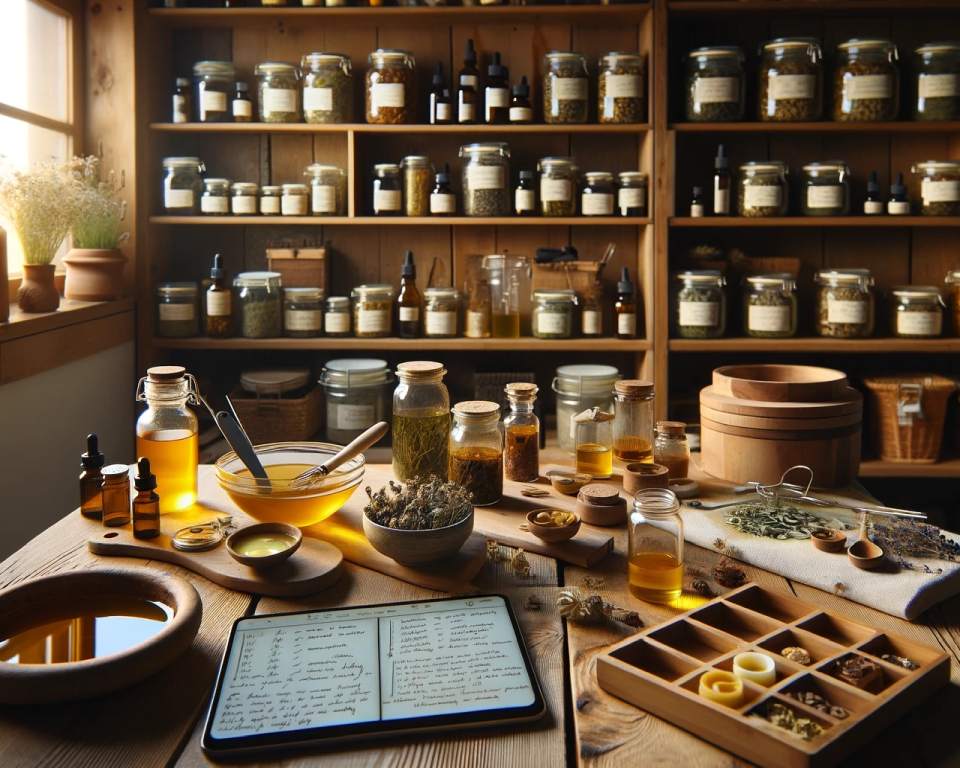
Botanical Guides for Plant Identification
Accurate plant identification is crucial for safe and effective foraging. As foragers, having the ability to confidently identify wild plants allows us to expand our knowledge and utilize a wider variety of wild edibles. That’s why it’s essential to have reliable botanical guides at our disposal.
A reliable botanical guidebook is a valuable resource for any forager. It provides detailed descriptions, photographs, and illustrations of various plant species, helping us identify plants with accuracy and confidence. Look for guidebooks that cover a wide range of wild edible plants and offer information on their specific characteristics, habitat, and uses.
One highly recommended botanical guidebook is “Botany in a Day” by Thomas J. Elpel. This comprehensive guide simplifies plant identification by teaching us to recognize patterns and family characteristics. It offers an easy-to-understand overview of plant families and their distinguishing features, making it an excellent companion for both beginners and experienced foragers.
Additionally, online resources can be valuable references for plant identification. Websites, forums, and online communities dedicated to foraging provide a wealth of information and allow us to connect with experienced foragers who can offer guidance and support. Examples of trusted online resources include:
- Wildflower.org: A website dedicated to the study and appreciation of North American native plants, providing resources for plant identification and conservation.
- Plants.usda.gov: The United States Department of Agriculture’s website offers an extensive database of plants, including images and detailed descriptions, making it a useful tool for accurate plant identification.
- Foraging.com: A popular online community where foragers share their experiences, plant identification tips, and recipes, creating a collaborative space for learning and growing together.
Remember, accurate plant identification is essential for safe foraging. By utilizing reliable botanical guides, both in print and online, we can enhance our foraging techniques and ensure our success in finding and utilizing a wide range of wild edible plants.
We must rely on trustworthy botanical guides to identify wild plants accurately. These guides equip us with the knowledge and confidence needed to safely forage for a variety of wild edible plants.
Suggested Reading
Furthering our knowledge and skills in foraging is an ongoing journey. Whether you’re seeking a comprehensive foraging guide, wild food recipes, or information on edible plants for survival, the following reading materials can expand your understanding and expertise:
- The Forager’s Harvest: A Guide to Identifying, Harvesting, and Preparing Edible Wild Plants by Samuel Thayer
- Nature’s Garden: A Guide to Identifying, Harvesting, and Preparing Edible Wild Plants by Samuel Thayer
- Edible Wild Plants: Eastern/Central North America by Lee Allen Peterson
- Foraging the Mountain West: Gourmet Edible Plants, Mushrooms, and Meat by Thomas J. Elpel
- Backyard Foraging: 65 Familiar Plants You Didn’t Know You Could Eat by Ellen Zachos
Additional Online Resources
For those who prefer digital resources, the following websites offer valuable information and foraging insights:
- Wild Food UK
- Eat The Weeds
- Tend: A Wild Blog
- Wild Foodism
- Foraging Texas
In the words of Euell Gibbons, “Wild foods are largely unknown to Americans, but I hope we will start to appreciate them. As people shy away from artificial additives and seek a healthier lifestyle, the flavors of the wild will resonate and continue to grow in popularity.”
Remember, building our knowledge through books and online resources is just the beginning. Hands-on experience and mentorship are invaluable for developing a deep understanding of foraging, wild food recipes, and edible plants for survival. Let these suggested readings be your gateway to a rewarding and sustainable foraging journey.
About the Author
Allow me to introduce myself, my name is David Nash, and I am the author of The Prepper’s Guide to Foraging. With over 15 years of experience in the field of foraging and a deep passion for the wild, my aim is to share valuable knowledge and insights with readers like you.
Throughout my journey as a forager, I have honed my skills in identifying and harvesting wild edible plants, making me well-equipped to guide you through the enchanting world of foraging. I believe that understanding nature’s bounties and learning how to utilize them is essential for self-sufficiency and survival.
Through The Prepper’s Guide to Foraging, I strive to provide you with a comprehensive resource that combines detailed information, practical tips, and reliable techniques. With this guide, you will gain the confidence to navigate the wilderness, identify edible plants, and harness their potential for sustenance and medicine.
FAQ
How can I learn about wild edible plants?
There are various ways to learn about wild edible plants, such as using books, online resources, and joining foraging groups. It’s important to ensure proper plant identification and rely on reliable sources for information.
What is the universal edibility test?
The universal edibility test is a precautionary measure for foragers to determine the safety of unknown plants. It involves observing and testing small amounts of each part of the plant to check for potential toxicity.
Can foraging be a suitable meal plan for outdoor adventures?
Foraging can be a viable option for obtaining sustenance during outdoor adventures, but it requires proper planning and knowledge. It’s important to exercise caution and adhere to safety guidelines when foraging in the wild.
How can I identify different plant parts for foraging?
Recognizing different plant parts, such as leaves, stems, flowers, and roots, is crucial for accurate plant identification. Understanding key features like leaf shape, growth patterns, and color can facilitate the identification process and ensure safe foraging.
What are the guidelines for responsible harvesting?
Responsible harvesting involves only harvesting what is needed, avoiding rare or endangered species, and leaving enough plants for regrowth and reproduction. Following ethical foraging practices ensures the sustainability of wild edible plants for future generations.
What are some common tree species that offer edible options?
American Basswood, Birch, Oak, and Walnut are some easily identified tree species common in North America that offer edible parts like leaves, bark, or nuts that can be used for food in a survival situation.
Which plants and shrubs provide edible options in the wild?
Some common plants and shrubs common to the United States that offer edible options include Amaranth, Blackberries, Dandelion, and Wild Strawberry. These plants have various uses and can provide sustenance in a survival situation.
How can wild plants be used to prepare medicinal items?
Wild plants can be utilized to prepare standard medicinal items like tinctures, creams, and infusions. Different plants have healing properties, and understanding their preparation can enhance self-sufficiency and resilience.
What are some reliable botanical guides for plant identification?
There are several recommended botanical guidebooks and online resources for plant identification. These resources can help foragers confidently identify and utilize a wider variety of wild plants.
Can you suggest further reading materials on foraging and wild food recipes?
Yes, there are numerous books and resources available on foraging, wild food recipes, and edible plants for survival. These materials cover various aspects of foraging, from plant identification to wilderness survival skills.
Who is the author of The Prepper’s Guide to Foraging?
The author of The Prepper’s Guide to Foraging is David Nash. He is an expert in the field of foraging with a wealth of experience. His commitment to sharing valuable knowledge with readers adds credibility to the information presented in the book.


